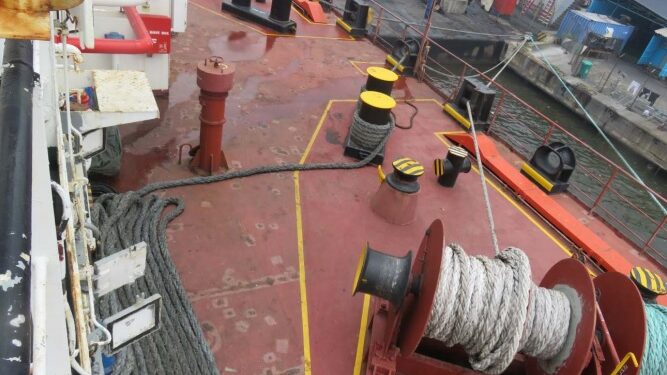In its latest Safety Flashes, IMCA analyzed a mooring line incident which caused collision between a barge and a tugboat. Although, there was no damage as a result, IMCA stressed incorrect mooring technique and pulling angle as a key safety issue.
The incident
During mooring operations of a cargo barge, a mooring line slipped off the cargo barge bollards, causing it to whip back and hit the attending tug.
The tug was damaged by the mooring rope and control of the barge was lost for a short period, causing a minor collision.
Due to the tension in the mooring lines at the time, the lines whipped back toward the attending tug, striking the tug’s monkey island and resulting in damage to the antenna dome.
As a result of the loss of control, the cargo barge and the vessel came into collision; however, there was no damage.
There was no risk of injury to personnel during the incident.
Safety issues
- Incorrect mooring technique and pulling angle;
- The mooring lines were tied incorrectly to a bollard on the barge. The mooring configuration was not appropriate and allowed the mooring lines to slip off;
- The cargo barge bollards were angled ‘backward’ as they were designed for towing operations;
- The ‘attending’ tug had too much slack paid out on the towing bridle, and therefore attempts to abandon berthing operations were compromised.
Lessons learned
- When mooring alongside a vessel, a ‘figure of eight’ mooring pattern should be applied to prevent the mooring lines from slipping off the barge if there is opposing movement possible between the tug and barge;
- Consider fit for purpose bollard design with appropriate mooring technique when mooring a tug to cargo barge. Marine inspections should take into account bollard design effectiveness for proposed operations;
- Further training and instruction for marine personnel involved, on mooring techniques and on line of fire positioning around mooring stations;
- Verify that contingency plans for marine operations are followed and regularly practiced.






























































